Thrift to Save the Planet
Help save money and the climate in one fashionable fell swoop.
In the fight against climate change, we believe personal responsibility plays a big role.
How? Consumption drives demand, which drives harmful manufacturing, transportation, and labour practices all over the world.
So today we’re talking thrifting, and how it can help regular folks like us fight climate change.
How Can Thrifting Fight Climate Change?
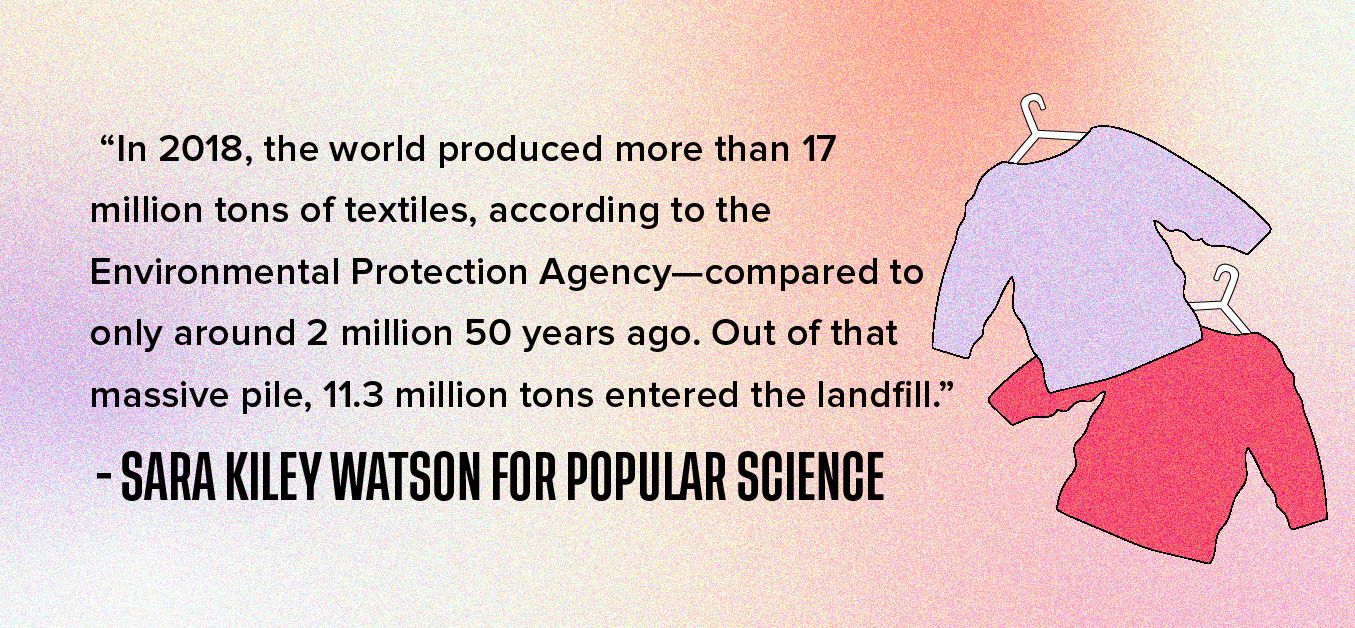
Fast fashion as we know it took shape in the 1980s. Huge consumer demand and rapidly changing trends caused companies to move their garment manufacturing sites to countries where it was cheaper to operate.
In turn, the price of clothing fell. One thing led to another, and the Sheins and Forever 21s of the world were born. Today, cheap clothes are generally made in faraway countries by people who are generally chronically underpaid and mistreated; those clothes are then transported at immense environmental cost to us in Canada, and often wind up in the landfill before long.
“The trouble with this is that when you can make clothes at rock-bottom prices, they become more or less worthless,” writes Sara Kiley Watson for Popular Science. “In 2018, the world produced more than 17 million tons of textiles, according to the Environmental Protection Agency—compared to only around 2 million 50 years ago. Out of that massive pile, 11.3 million tons entered the landfill.” (The EPA is an American body, but we can extrapolate the relevance of this data to Canada, too.)
“In 2018, the world produced more than 17 million tons of textiles, according to the Environmental Protection Agency—compared to only around 2 million 50 years ago. Out of that massive pile, 11.3 million tons entered the landfill.” - Sara Kiley Watson for Popular Science
So the cycle continues. Cheap clothes are made, bought, transported, and thrown away, and our climate suffers.

When we buy clothing second hand, we help stop the vicious cycle of fast fashion. We take our consumer dollars out of the fast fashion cycle and use it to support other businesses, while extending the life cycle of the garments we purchase.
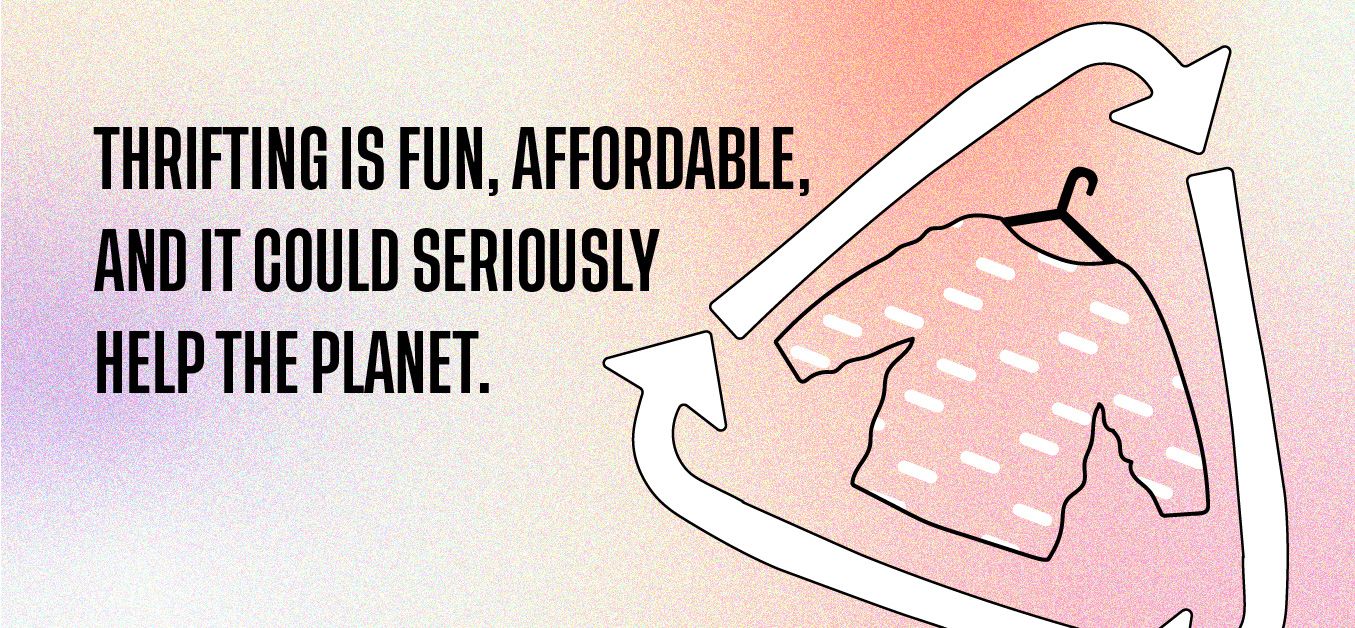
Thrifting is fun, affordable, and it could seriously help the planet.
But there are a few tricks you should know before you head out to your local thrift store to get started.
How to Thrift Like a Pro
If you want to make the most of your thrift shopping trip, there’s a bit of prep work to do.
Before You Thrift
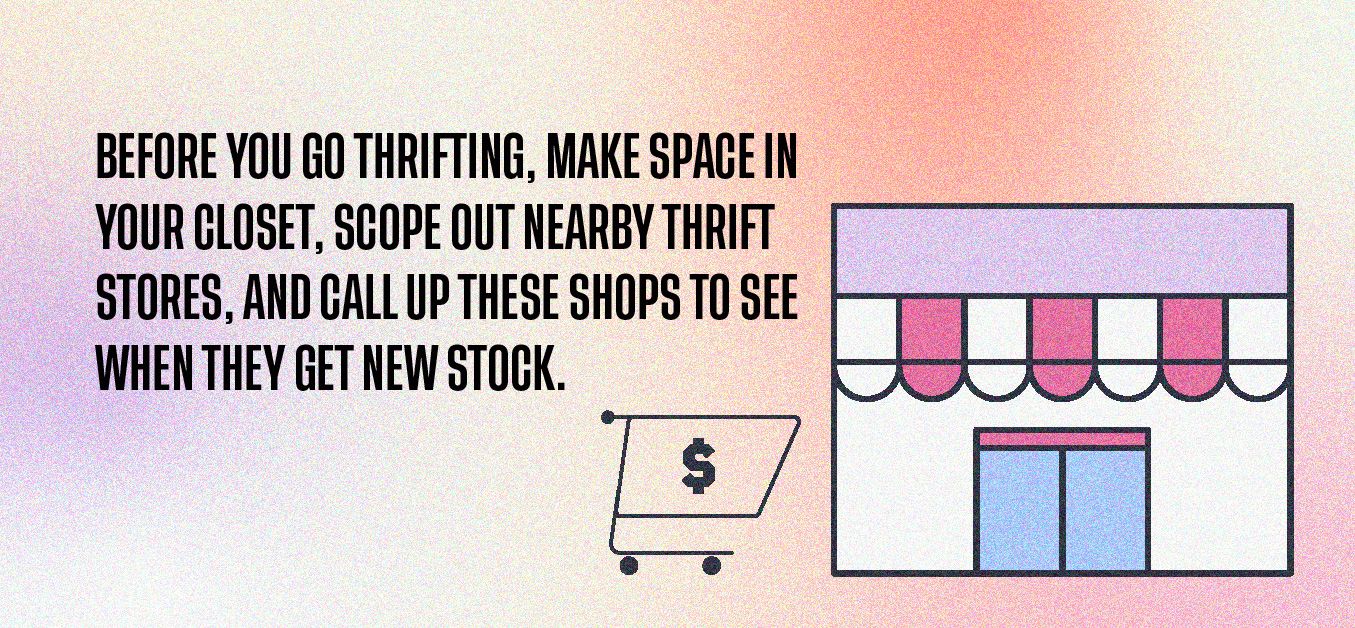
Before you get to thrifting, clear out space in your closet. Sell items of clothing you don’t use anymore, or donate them to a local charity. Don’t throw them away. Just because you don’t have use for them doesn’t mean someone else won’t!
Then, do some research. Check out which thrift stores are near you. Bonus points if you don’t have to drive to get there—remember, we’re advocating for the climate here, people!
By scoping out thrift stores ahead of time, you can learn what they specialize in. Some shops will have an excellent shoe selection, for example, perhaps simply by virtue of being located down the block from a shoe fiend. Others will consistently sell great jackets.
Next, call up these shops and find out when they receive new stock. Knowing if they receive shipments on Tuesdays or Fridays means you can be the first to peruse new goods, giving you the pick of the lot.
Lastly, know what you’re looking for. The point is not simply to buy more stuff and feel less guilty about it. If you need a winter jacket, shop regularly to find the perfect thing; don’t be tempted to end every thrifting trip with a bag full of cute second hand goods.
Before you go thrifting, make space in your closet, scope out nearby thrift stores, and call up these shops to see when they get new stock.
Come Prepared
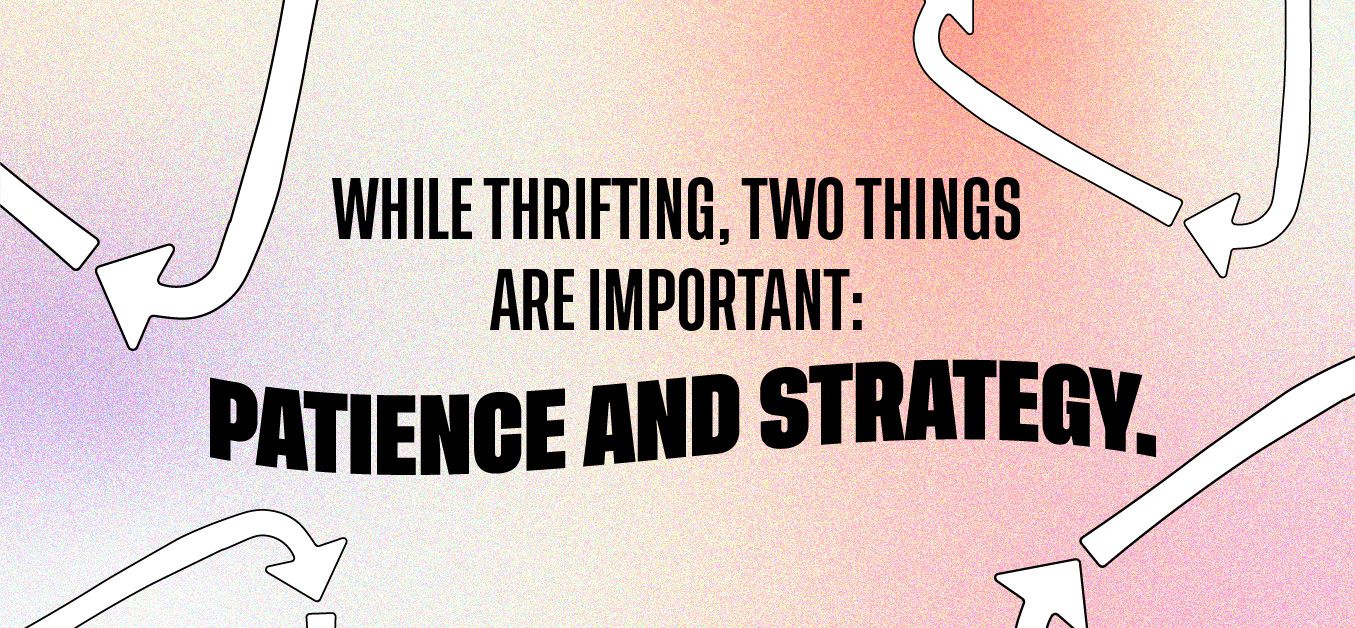
While thrifting, two things are important: patience and strategy.
You might not immediately find the thing you’re looking for. You might have to make multiple unsuccessful trips. But you will likely eventually find just what you’re looking for, on a budget and while helping the environment.
Secondly, wear the right clothes for the occasion! This is where your strategy comes in. Not all thrift shops will have changing rooms for you to try on wares, so it’s important to dress for the item you’re looking for.
Like, if you’re looking for a winter coat, wear a thick sweater so you can gauge the fit for a super cozy, layered up winter look. If you’re looking for a great pair of Levi’s, wear tight fitting pants so you can try on jeans over top.
Lastly, ensure you’ve got your budget top of mind, and stick to it. But we can help with that.
Cutting Your Consumption
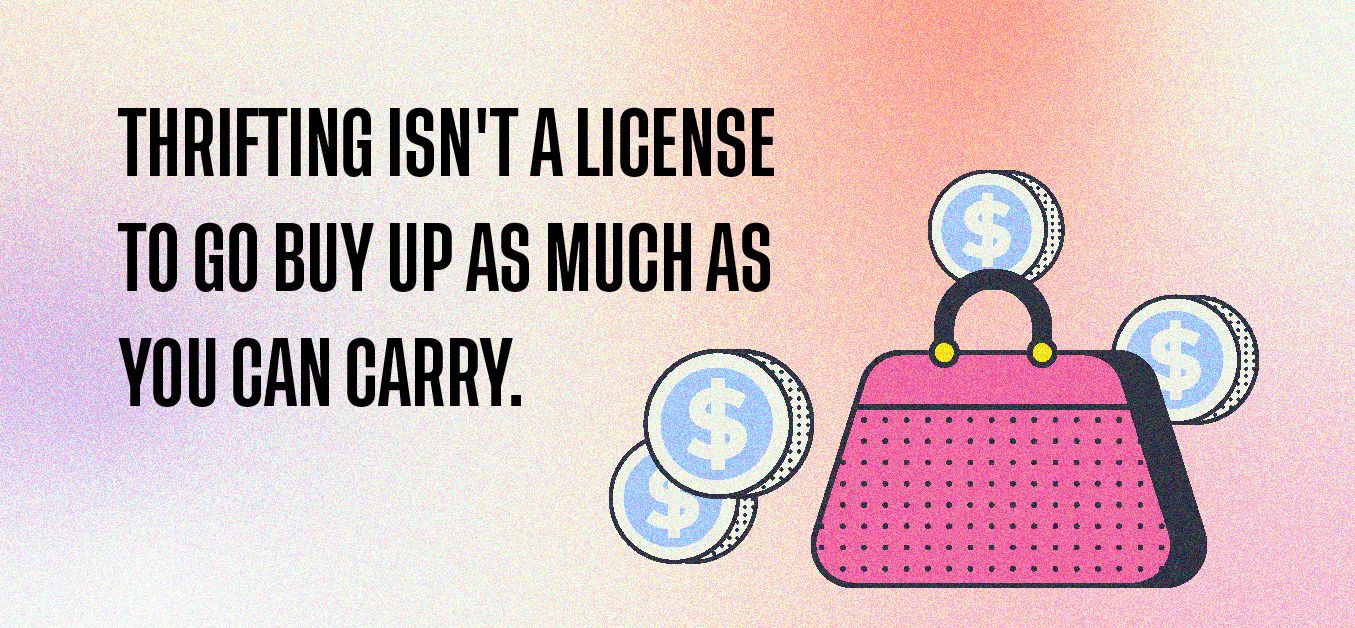
Here’s the real deal. We believe thrifting, on the whole, is better for the environment than buying crappy clothes new and tossing your old ones.
But it’s not a wholesale fix for climate change (obviously!). Because thrifting, while better for the environment than buying into fast fashion, is not a substitute for limiting your consumption overall.
Yep. Sorry. Thrifting isn't a license to go buy up as much as you can carry. We all need clothes to wear, yes—but the only way to truly lessen our impact on the earth is to consume less. Way less.
Seriously. Want receipts? Find ‘em here.
The best kind of shopping is the kind you do in your own closet, writes Kiley Watson. We must unlearn the notion that there are completely ethical ways to consume, because there aren’t. Instead, we must closely consider our relationship with consumption and always be seeking out better, more environmentally friendly ways to live our lives.
Help Save the Planet with MogoCard
As we said, you need clothes. We all do. So when you find yourself in need of a new jacket or shoes, and you saunter down to the thrift store, take your Mogo Visa* Platinum Prepaid Card with you.
Why? Three reasons: first, the MogoCard can help you save money. Every time you make a transaction, we remind you of your remaining balance to help you stay on budget.
Third? It’s free. Yep. You can help your wallet and the planet for free.
We all have a long way to go in our quest to heal the planet and fight climate change. Amplify your impact by signing up for your free MogoCard today, and let’s tackle this challenge together.
| GET MY FREE MOGOCARD |
This blog is provided for informational purposes only.
*Trademark of Visa International Service Association and used under licence by Peoples Trust Company. Mogo Visa Platinum Prepaid Card is issued by Peoples Trust Company pursuant to licence by Visa Int. and is subject to Terms and Conditions, visit mogo.ca for full details. Your MogoCard balance is not insured by the Canada Deposit Insurance Corporation (CDIC). MogoCard means the Mogo Visa Platinum Prepaid Card.
1-According to research conducted by Veritree Technology Inc. 500 lbs. is an approximate amount based on Above-Ground-Carbon (AGC) and Below Ground Carbon (BGC) sequestration estimates contained in several scientific research papers regarding the carbon sequestration of Mangrove trees (the “Research”). The Research contains various ranges for the rate of carbon sequestration per hectare of land. In order to arrive at the approximate amount of 500 lbs., Veritree triangulated data points from the Research regarding AGC and BGC sequestration estimates, and then converted those results into the approximate amount of lbs. per tree.